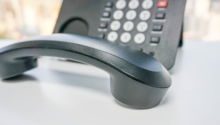液晶显示模组具体生产工艺流程是什么?
发布人:管理员 发布时间:2020-08-10
前段工位:ito 玻璃的投入(grading)—— 玻璃清洗与干du燥(cleaning)——涂光刻胶(pr coat)——前烘烤(prebreak)——曝光(develop) 显影(main cure)——蚀刻(etching)——去膜(strip clean)—— 图检(insp)——清洗干燥(clean)——top 涂布(top coat)——烘烤(uv cure)—— 固化(main cure)——清洗(clean)—— 涂取向剂(pi print)——固化(main cure)—— 清洗(clean)——丝网印刷(seal/short printing)—— 烘烤(cuping furnace)—— 喷衬垫料(spacer spray)—— 对位压合(assembly)—— 固化(seal main curing)
1. ito 图形的蚀刻:(ito 玻璃的投入到图检完成)
a. ito 玻璃的投入:根据产品的要求,选择合适的ito 玻璃装入传递篮具中,要求ito 玻璃的规格型号符合产品要求,切记ito层面一定要向上插入篮具中。
b. 玻璃的清洗与干燥: 将用清洗剂以及去离子水(di 水)等洗净ito 玻璃,并用物理或者化学的方法将ito表面的杂质和油污洗净,然后把水除去并干燥,保证下道工艺的加工质量。
c. 涂光刻胶: 在ito 玻璃的导电层面上均匀涂上一层光刻胶,涂过光刻胶的玻璃要在一定的温度下作预处理:
d. 前烘:在一定的温度下将涂有光刻胶的玻璃烘烤一段时间,以使光刻胶中的溶剂挥发,增加与玻璃表面的粘附性。
e. 曝光:用紫外光(uv)通过预先制作好的电极图形掩模版照射光刻胶表面,使被照光刻胶层发生反应,在涂有光刻胶的玻璃上覆盖光刻掩模版在紫外灯下对光刻胶进行选择性曝光:
f. 显影:用显影液处理玻璃表面,将经过光照分解的光刻胶层除去,保留未曝光部分的光刻胶层,用化学方法使受uv光照射部分的光刻胶溶于显影液中,显影后的玻璃要经过一定的温度的坚膜处理。
g. 坚膜:将玻璃再经过一次高温处理,使光刻胶更加坚固。
h. 刻蚀:用适当的酸刻液将无光刻胶覆盖的ito 膜蚀掉,这样就得到了所需要的ito 电极图形:
注:ito 玻璃为(in2o3 与sno2)的导电玻璃,此易与酸发生反应,而用于蚀刻掉多余的ito,从而得到相应的拉线电极。
i. 去膜:用高浓度的碱液(naoh 溶液)作脱膜液,将玻璃上余下的光刻胶剥离掉,从而使ito玻璃上形成与光刻掩模版完全一致的ito 图形。(即按客户要求进行显示的部分拉线蚀刻完成)
j. 清洗干燥:用高纯水冲洗余下的碱液和残留的光刻胶以及其它的杂质。
2. 特殊制程:(top 膜的涂布到固化后清洗)
一般的tn 与stn 产品不要求此步骤,top 膜的涂布工艺是在光刻工艺之后再做一次sio2的涂布,以此把刻蚀区与非刻蚀区之间的沟槽填平并把电极覆盖住,这既可以起到绝缘层的作用,又能有效地消除非显示状态下的电极底影,还有助于改善视角特性等等,因此大部分的高档次产品要求有top涂布。
3. 取向涂布(涂取向剂到清洗完成)〈br〉〈/strong〉〈br〉此步工艺为在蚀刻完成的ito玻璃表面涂覆取向层,并用特定的方法对限向层进行处理,以使液晶分子能够在取向层表面沿特定的方向取向(排列),此步骤是液晶显示器生产的特有技术。
a. 涂取向剂:将有机高分子取向材料涂布在玻璃的表面,即采用选择涂覆的方法,在ito玻璃上的适当位置涂一层均匀的取向层,同时对取向层做固化处理。(一般在显示区)
b. 固化: 通过高温处理使取向层固化。
c. 取向摩擦:用绒布类材料以特定的方向摩擦取向层表面,以使液晶分子将来能够沿着取向层的摩擦方向排列。如tn 型号摩擦取向:45 度
d. 清洗: 取向摩擦后的玻璃上会留下绒布线等污染物,需要采取特殊的清洗步骤来消除污染物。
4.空盒制作:(丝网印刷到固化)〈br〉〈/strong〉〈br〉此步工艺是把两片导电玻璃对叠,利用封接材料贴合起来并固化,制成间隙为特定厚度的玻璃盒。制盒技术是制造液晶显示器的最为关键的技术之一。(必须严格控制液晶盒的间距)
a. 丝印边框及银点:将封接材料(封框胶)用丝网印刷的方法分别对上板印上边框胶和和下板玻璃印是导电胶。
b. 喷衬垫料: 在下玻璃上均匀分布支撑材料。将一定尺寸的衬垫料(一般为几个微米)均匀分散在玻璃表面,制盒时就*这些材料保证玻璃之间的间距即盒厚。
c. 对位压合: 按对位标记上与下玻璃对位粘合,将对应的两片玻璃面对面用封接材料粘合起来。
d. 固化: 在高温下使封接材料固化。固化时一般在上下玻璃上加上一定的压力,以使液晶盒间距(厚度保持均匀)。
后段工位:
切割(scribing)—— y 轴裂片(break off)——灌注液晶(lc injection)—— 封口(end sealing)——x 轴裂片(break off)—�ature for a period of time to volatilize the solvent in the photoresist and increase the adhesion to the glass surface.
e. exposure: use ultraviolet light (uv) to irradiate the photoresist surface through a pre-made electrode pattern mask to make the illuminated photoresist layer react, and cover the photoresist mask on the glass coated with photoresist and align it under an ultraviolet lamp. selective exposure of photoresist:
f. development: treat the glass surface with a developer solution, remove the photoresist layer that has been decomposed by light, leave the unexposed part of the photoresist layer, and chemically dissolve the photoresist in the part irradiated by uv light in the developer solution, and develop the latter glass must undergo a certain temperature hard film treatment.
g. hard film: the glass undergoes a high temperature treatment to make the photoresist stronger.
h. etching: use an appropriate acid etching solution to etch away the ito film that is not covered by photoresist, so that the required ito electrode pattern is obtained:
note: ito glass is (in2o3 and sno2) conductive glass, which easily reacts with acid and is used to etch away excess ito to obtain the corresponding pull-wire electrode.
i. film removal: use high-concentration lye (naoh solution) as a film release solution to peel off the remaining photoresist on the glass, so that an ito pattern that is exactly the same as the photoresist mask is formed on the ito glass. (that is, the part of the drawing wire shown according to customer requirements is etched)
j. cleaning and drying: rinse the remaining lye, residual photoresist and other impurities with high-purity water.
2. special process: (top film coating to cleaning after curing)
general tn and stn products do not require this step. the coating process of top film is to do another sio2 coating after the photolithography process to fill the trench between the etched area and the non-etched area. cover the electrode, which can not only play the role of an insulating layer, but also effectively eliminate the bottom shadow of the electrode in the non-display state, and also help improve the viewing angle characteristics, etc. therefore, most high-end products require top coating cloth.
3. orientation coating (application of orientation agent until cleaning is completed)
this process is to coat an orientation layer on the surface of the etched ito glass, and use a specific method to treat the orientation layer to make liquid crystal molecules can be aligned (arranged) in a specific direction on the surface of the alignment layer. this step is a unique technology for the production of liquid crystal displays.
a. coating orientation agent: coating organic polymer orientation material on the surface of the glass, that is, using selective coating method, apply a uniform orientation layer on the appropriate position on the ito glass, and cure the orientation layer at the same time. (usually in the display area)
b. curing: curing the alignment layer through high temperature treatment.
c. orientation rubbing: use flannel materials to rub the surface of the alignment layer in a specific direction, so that the liquid crystal molecules can be aligned along the rubbing direction of the alignment layer in the future. such as tn model friction orientation: 45 degrees
d. cleaning: after orientation rubbing, contaminants such as velvet wiring will be left on the glass, and special cleaning steps need to be taken to eliminate contaminants.
4. empty box production: (screen printing to curing)
this process is to stack two pieces of conductive glass, use the sealing material to bond and cure, and make the gap of a specific thickness glass box. box-making technology is one of the most critical technologies for manufacturing liquid crystal displays. (the spacing of the liquid crystal cells must be strictly controlled)
a. silk screen frame and silver dots: the sealing material (frame sealant) is screen-printed on the upper plate with the frame glue and the lower plate glass is printed with conductive glue.
b. spray spacer: distribute the support material evenly on the lower glass. disperse a certain size of spacer material (usually a few microns) evenly on the glass surface. when making the box, use these materials to ensure the spacing between the glasses, that is, the box thickness.
c. alignment pressing: according to the alignment mark, the upper and lower glass are aligningly bonded, and the corresponding two pieces of glass are bonded face to face with a sealing material.
d. curing: curing the sealing material at high temperature. during curing, a certain amount of pressure is generally applied to the upper and lower glass to make the spacing of the liquid crystal cells (the thickness remains uniform).
back station:
cutting (scribing)-y-axis split (break off)-perfusion liquid crystal (lc injection)-sealing (end sealing)-x-axis split (break off)-edging-one cleaning (clean)- heating —— visual insp —— electrical —— secondary cleaning (clean) —— special process (polygon) —— back printing —— dry ink (cure)-patch (polarizer assembly)-hot pressing (cleaver)-finished inspection appearance inspection (fqc)-upper lead (bit pin)-final inspection (final insp)-packaging (packing) )—— in stock

 您现在的位置:欧洲杯外围平台-在线欧洲杯买球 >欧洲杯外围平台的服务支持
> 在线欧洲杯买球的技术支持
您现在的位置:欧洲杯外围平台-在线欧洲杯买球 >欧洲杯外围平台的服务支持
> 在线欧洲杯买球的技术支持